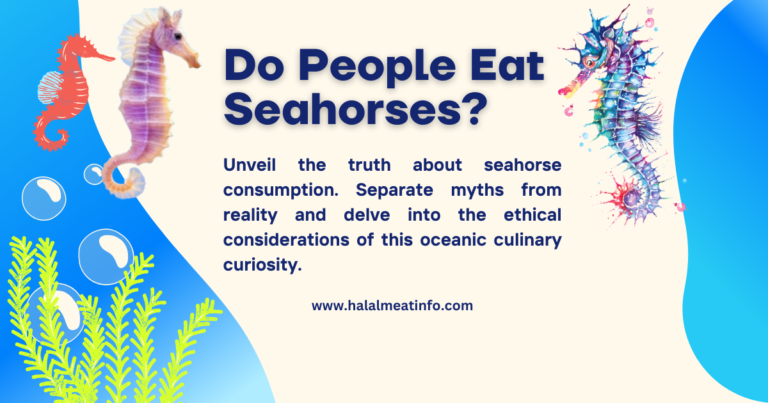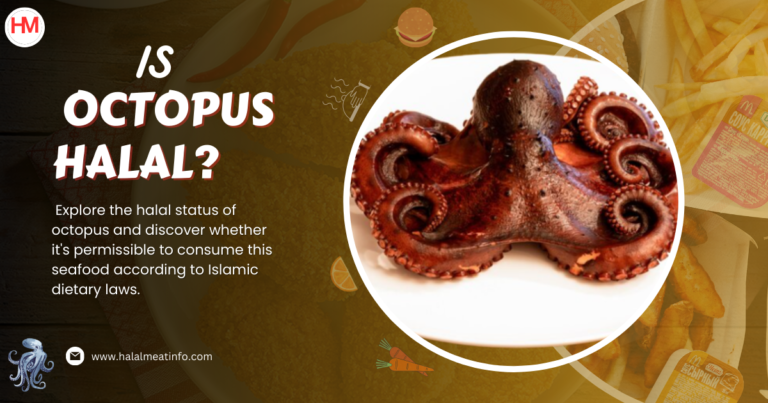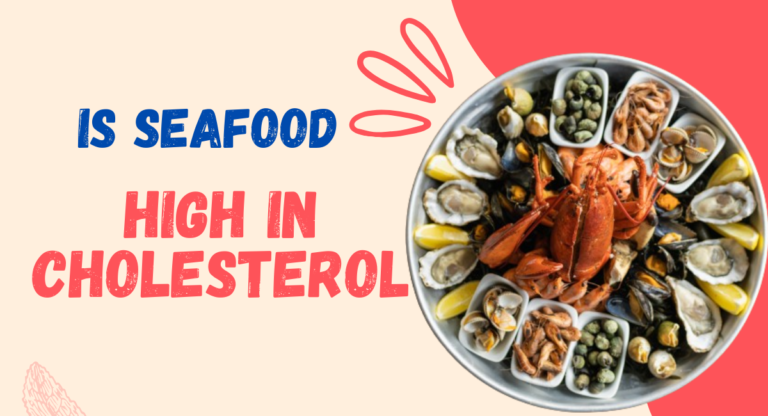Can You Eat a Starfish? Unlocking the Mysteries of Marine Cuisine
Embark on a food adventure with us as we ask a curious question: Can you eat a starfish? The ocean is full of mysteries, and starfish are some of the most interesting creatures living there. This blog post goes beyond the usual cooking questions, exploring if it’s possible to eat a creature from the deep sea. We’ll dive into the topic, from stories about the ocean to real-life cooking possibilities. Let’s find out if starfish can be more than just a fascinating sight in the ocean!

What is a Starfish?
Starfish, or sea stars, are marine invertebrates. Though they’re called ‘fish’, they’re not true fish. They’re echinoderms, related to sea urchins and sand dollars. Starfish come in diverse shapes, sizes, and colors. They’re known for their iconic five-armed shape, although some species can have up to 50 arms! Their remarkable ability to regenerate lost arms adds to their captivating nature. These creatures inhabit all the world’s oceans, adding beauty and intrigue to underwater landscapes.
Potential Curiosity About Eating Starfish
While the idea may seem odd to many, contemplating the edibility of starfish isn’t uncommon. People often wonder about their taste and safety for human consumption. Some look at them as a potentially new seafood delicacy. Others see them as a survival food option when stranded in the wild. The curiosity arises from our adventurous eating habits and the human inclination to explore the unknown. But is it safe to satisfy this curiosity? Are starfish really fit for our plates? Let’s continue our underwater exploration to uncover these answers.
Starfish as Food: A Historical Perspective
Historically, starfish have found their place on the dining table in several cultures. While not a mainstream choice, evidence shows instances of starfish consumption in various parts of the world. In particular, native coastal communities have occasionally turned to these marine creatures for sustenance.
Cultures Where Starfish is Part of the Diet
Interestingly, starfish are a part of traditional cuisine in some cultures. For instance, in China, especially within the coastal regions, starfish have been a culinary feature for centuries. They are often dried, preserving them for later use in cooking. Similarly, in Japan, starfish find a place in their diverse seafood cuisine. Despite their slightly tough texture and unique taste, these cultures have developed cooking methods that transform starfish into an exotic delicacy. Starfish aren’t a daily meal, but they do make occasional appearances during special events or as a novel food experience for the adventurous eater.
Can You Eat a Starfish?
In short, yes, you can technically eat a starfish. However, whether it’s safe or advisable is a different matter. As with any food, there are risks associated with consuming starfish. While some cultures have developed methods to prepare and consume starfish, it’s not a widely accepted practice in the culinary world. Due to their unorthodox nature and potential health hazards, experts advise against eating starfish.
Nutritional Value of Starfish
One may wonder about the nutritional value a starfish offers. Like other seafood, starfish are rich in high-quality protein, a vital nutrient for tissue repair and muscle growth. They also house a notable amount of minerals, including calcium and magnesium, promoting bone health. Traces of iron found in starfish aid in red blood cell production.
Potential Health Benefits of Eating Starfish
Despite their unusual place in the food chain, starfish do provide some health benefits. Their high protein content contributes to a sense of fullness, aiding in weight management. The minerals offer support to bone health, while iron can prevent anemia. However, one should remember these benefits come with caution. Starfish should be consumed in moderation due to potential toxins they may carry, and always ensure they are prepared safely and correctly to avoid any adverse effects.
Potential Dangers of Eating Starfish
While consuming starfish might offer certain benefits, it also presents potential health risks, with the primary concern being the presence of toxins. Starfish can accumulate harmful substances from their marine environment, including heavy metals and other pollutants. Ingesting contaminated starfish can lead to health issues such as heavy metal poisoning. Additionally, some starfish species produce their own toxins as a defense mechanism. Ingesting these can result in serious health problems and allergic reactions.
Is Starfish Halal?
When it comes to dietary laws in Islam, the consumption of sea creatures is subject to specific rules. For a marine animal to be Halal, or permissible, it must meet certain criteria outlined in Islamic law. While fish with scales are generally considered Halal, the status of invertebrates like starfish remains debated among scholars. The majority view starfish as Makruh (discouraged) or Haram (forbidden) due to their lack of scales and non-fishlike nature.
Reasons Why Starfish is Not Halal
- Starfish is Not a Fish: Starfish, despite their name, are not true fish. They’re not classified as such in the scientific community, which raises doubts about their suitability for consumption under Islamic law.
- Lack of Scales: One of the criteria for a seafood to be considered Halal is the presence of scales. Starfish don’t have scales, making them ineligible for consumption according to many scholars.
- Unclean Habitat: As bottom dwellers, starfish reside in murky and potentially contaminated waters. This raises concerns about the cleanliness and safety of consuming these creatures.
- Possible Toxins: Some species of starfish have been known to contain toxins that can be harmful or even fatal if consumed by humans.
- Starfish’s Undefined Status: Despite being a non-fish marine creature, starfish’s classification under Islamic law remains unclear. This ambiguity causes hesitation among many Muslims to consume it.
For more insights into the world of seafood and its dietary regulations, be sure to check Halal Meat Info. This excellent resource guides you through the intricacies of seafood consumption under the Halal dietary laws, using oysters as a prime example.
Importance of Sourcing and Preparation
Given the potential risks, careful sourcing and preparation of starfish are crucial. Always procure starfish from reputable sources that provide assurance of their safety for human consumption. Preparation also plays a vital role in making starfish safe to eat. Proper cleaning, cooking, and handling are necessary to reduce the risk of contamination. However, even with these precautions, it’s important to remember that consumption should be moderate and not a regular part of one’s diet.
The Safety of Eating Starfish
As intriguing as it might be to taste starfish, safety should always be the top priority. Although some cultures have a history of consuming starfish, caution should prevail. The marine environment where starfish live can contain pollutants and toxins, which the starfish may absorb. Some starfish species also produce their own toxins. Eating an improperly prepared or toxic starfish can result in severe health conditions. If you decide to try starfish, it should come from a reputable source and be prepared correctly. Even then, it should be consumed sparingly and not become a regular dietary element. Always consult a healthcare professional before trying new and unusual foods, especially those with potential risks like starfish.
The Edible Parts of a Starfish
Identifying the edible parts of a starfish is crucial before consumption. Primarily, the arms of the starfish are what people eat. These contain the creature’s tube feet – a key source of their meat. The central disk, often referred to as the body, is also edible, providing a smaller portion of meat. However, not all parts of a starfish are safe to consume. Its tough outer skin, while not toxic, is usually discarded due to its leathery texture. Similarly, the internal organs are not typically consumed, with most recipes suggesting their removal during preparation. Remember, preparation plays a significant role in making starfish safe to eat, and this typically involves cleaning, boiling, and removing inedible parts.
Starfish Consumption in the UK
In the United Kingdom, eating starfish isn’t a common practice. British cuisine, though rich in seafood, typically does not include starfish. While adventurous eaters might consider trying this exotic creature, it’s important to remember the potential health risks involved. As such, the consumption of starfish in the UK is neither widespread nor encouraged. If one does decide to try starfish, it’s crucial to source it from a reliable provider and ensure it is prepared properly to mitigate any potential health issues.
FAQs
No, not all starfish are safe for consumption. Some harbor toxins that could be harmful if ingested. Only consume starfish from reliable sources and ensure they’re prepared correctly.
No, starfish are not viewed as fish under Islamic dietary laws. Most scholars deem them as Makruh (discouraged) or Haram (forbidden) due to their lack of scales and non-fishlike nature.
Primarily, the arms of the starfish are eaten. The central disk also offers a smaller portion of meat. However, the tough outer skin and internal organs are often discarded due to texture or potential risks.
No, eating starfish isn’t a common practice in the UK. Although British cuisine is rich in seafood, it typically does not include starfish.
Health risks include potential exposure to toxins, either accumulated from their marine environment or produced by the starfish itself. These toxins can lead to serious health conditions, including heavy metal poisoning and allergic reactions.
Conclusion
In conclusion, from a religious perspective, specifically for followers of Islam, starfish are not permissible to consume. Beyond religious considerations, the consumption of starfish is a complex issue. It requires an understanding of food safety, knowledge of the potential health benefits and risks, careful sourcing, and correct preparation. The potential presence of toxins in starfish is a particular concern, making their consumption risky. Therefore, it’s crucial to approach this practice with caution. Despite some nutritional benefits, the potential dangers suggest that starfish consumption should remain an occasional delicacy, if at all, and not a regular part of one’s diet. Always seek professional advice when trying new and exotic food items, especially those like starfish that carry potential risks. Ultimately, your health should always be the primary concern.
Reference:
- https://en.wikipedia.org
- https://www.uwa.edu.au
- https://www.newworldencyclopedia.org
- https://www.bristolaquarium.co.uk
- https://animalsresearch.com
- https://bubblydiver.com
- https://www.fisheries.noaa.gov
- https://sciencing.com
- https://halalindustryquest.com
- https://www.ehow.com






